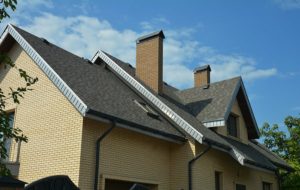Choosing the right rooftop ventilation isn’t a decision that should be made lightly. The best rooftop ventilation for your home will add to the longevity of your roof, lower your utility bills, and provide ease of mind.
Without the proper ventilation, your roof and attic can be susceptible to things like rust, mold, and mildew. In fact, a roof that isn’t properly ventilated can be damaged quicker than you might think. Your roof is exposed to the elements more than any other part of your home. Making sure that it is protected is crucial.
However, choosing the right rooftop ventilation for your home can be tricky. There are several different types and not all of them are right for your home. So, before you start your search, read on, and get ahead of the game when it comes to picking out the perfect roof ventilators and fans.
How much rooftop ventilation do you need?
Before choosing the type of rooftop ventilation for your home, you need to determine how much ventilation in the roof space you need. The first part of this process will involve measuring your attic’s size. It’s not a hard measurement to make, but if you feel unsure, you should call an expert. Once you have determined the square footage of your attic, you’ll know exactly how much ventilation you’ll need. To do this, you will use the 1:300 principle —for every 300 square feet of floor space, you will need one square foot of ventilation.
Now that you know how much, what kind should you get?
There are many options here, so you’ll want to thoroughly review them. Everyone’s house is different, so what works for one house might not work for another. Installing a ventilation system in your home that doesn’t fit your needs can lead to inefficiency, which will negate some or all the benefits you would receive if you had the proper roof ventilators and fans. Here are some options to consider:
1. Intake vents
Intake ventilators work by pulling cool air into your house while pushing the hot air out. Hot air is heavier and more condensed, so you want to get as much of it out of your home as possible. This will also help to keep your house — especially the upstairs area — cool during those hot summer months. These are the types of intake ventilators you can expect to find:
- Soffit vents – These are installed directly on the eaves of the roof.
- Gable vents – These are installed on opposite sides of the attic and act as exhaust vents.
- Over-fascia vents – These are meant for smaller roofs or homes with smaller attics.
2. Exhaust vents
Exhaust vents do the opposite of intake vents. Instead of pulling in cold air to push out the hot air, they simply allow hot air to escape the home. These are the types of exhaust ventilators you can expect to find:
- Ridge vents – These are installed along the peak of your roof and run across the entirety of the roofline. Ridge vents are one of the most common forms of rooftop ventilation you will find.
- Off-ridge vents – These are better suited for smaller homes as they are smaller and less effective than ridge vents.
- Box vents – These are installed directly into the roof by cutting a hole in the roof and having them placed in.
Should I consider energy-efficient vents?
Active roof vents are a type of vent that use solar energy or electricity. These are not as popular because generally when you are worried about your rooftop ventilation, you are thinking about saving money on your energy bills and these are not cheap. On one hand, they are great at ensuring a consistent air distribution throughout an attic space, but on the other hand, if your roof isn’t perfectly sealed, these can be inefficient.
Having the right kind of rooftop ventilation can not only save you money, but it can make your home living experience that much more comfortable. It will also help to ensure the health of your home.
If you are looking for the right type of roof ventilators and fans, please contact Jack C. Wilson Roofing today!


